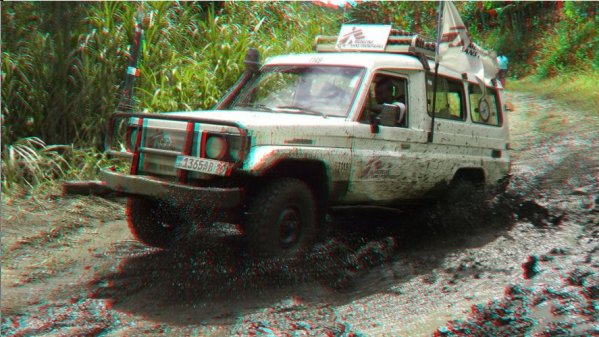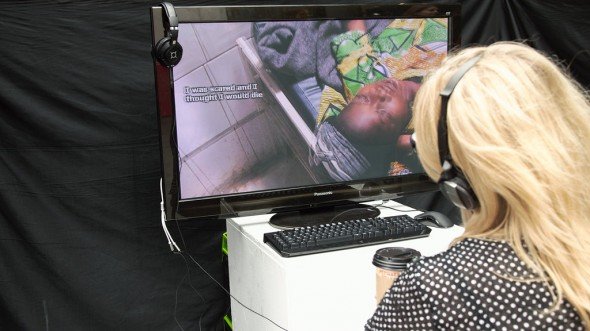NVIDIA experiments with 3D storytelling

What do 3D effects add in terms of storytelling? That's a discussion which comes up a lot no matter what visual medium you're working in at the moment, be it games, films or photography.
While not at all game related, it is has been interesting to look at techniques involved in one experiment for 3D storytelling that's taken place in Spitalfields Market, London, this week. Medecins sans Frontieres (MSF), an NGO which sponsors doctors and hospital workers in crisis regions and the developing world, teamed up with NVIDIA and one of the best photojournalism outfits around to create a short piece of 3D photojournalism about one of their midwives in the Democratic Republic of Congo.
Why I think this is important for PCG readers is that it's about what 3D can do to improve an already great story. From a film making perspective, we're still waiting for 3D movies to have their 'Hitchcock moment', when the technology is used to create a more compelling narrative than could ever have done before. Right now, the common complaint about 3D movies is that story has become subservient to the effect rather than the other way around: in many big budget films plot mechanics often seem to exist purely for something to be thrown dramatically out towards the audience.
The argument takes a slightly different form in games production. Games are created in fully 3D worlds, so applying stereoscopic camera angles is technically trivial. But should more effort be spent making sequences that are designed to be watched in 3D, rather than simply letting the graphics card drivers do their bit and let the 'moments' come from being in a more immersive world?
Sony made the bold claim a couple of days ago that gamers can improve their scores by using 3D screens . Others reckon that the effect often looks forced and distracting, like cardboard cutout scenery at the local am dram panto. Personally, I struggle with 3D because its unreliable and has innately high barriers to enjoyment - cost of kit and the necessity of wearing glasses being the obvious ones.
So the question is, how does 3D move beyond gimmickry and become an integral part of the storytelling mechanic?

Which is why, even though it's not about games, NVIDIA's latest application of its 3D Vision technology is worth looking at - it's a story in its purest form. The MSF installation was shot by a photographers from duckrabbit (one of the best multimedia/editorial agencies in the world whose blog is required reading if you care at all about photography) using a Fuji W3 . NVIDIA has donated PCs, screens and glasses for public showings of the film, and for the last six days MSF volunteers have been encouraging passers-by at Spitalfields Market in London to view it. 2D and 3D versions of the pics are being hosted over on NVIDIA's 3D Vision site, and there'll be a 3D version of the film up there soon too. In the meantime, you can watch the same film in 2D over at MSF's pages .
The biggest gaming news, reviews and hardware deals
Keep up to date with the most important stories and the best deals, as picked by the PC Gamer team.
What I found interesting is that it was the scenes directors and producers would expect to work well in 3D which felt a bit flat - cars splashing through water and people standing looking at the camera feel a little bit artificial. Where the 3D was most powerful was where it added something to the drama - forcing you to really focus on the baby or face which was closer to the camera than the team of surgeons behind it, for example. Where the stereoscopy brings out an element of the story that might otherwise be missed - and that's a lesson anyone working in 3D can learn.
It reminded me of something mentioned at a recent round table hosted by Alienware on the subject - that there's an art to 3D which is waiting to be mastered by someone, but no-one's sure who just yet.
Which is exactly why you should look at the best examples of this emerging form where ever they come from.
Plus, it's a great film and a worthy cause, of course.


